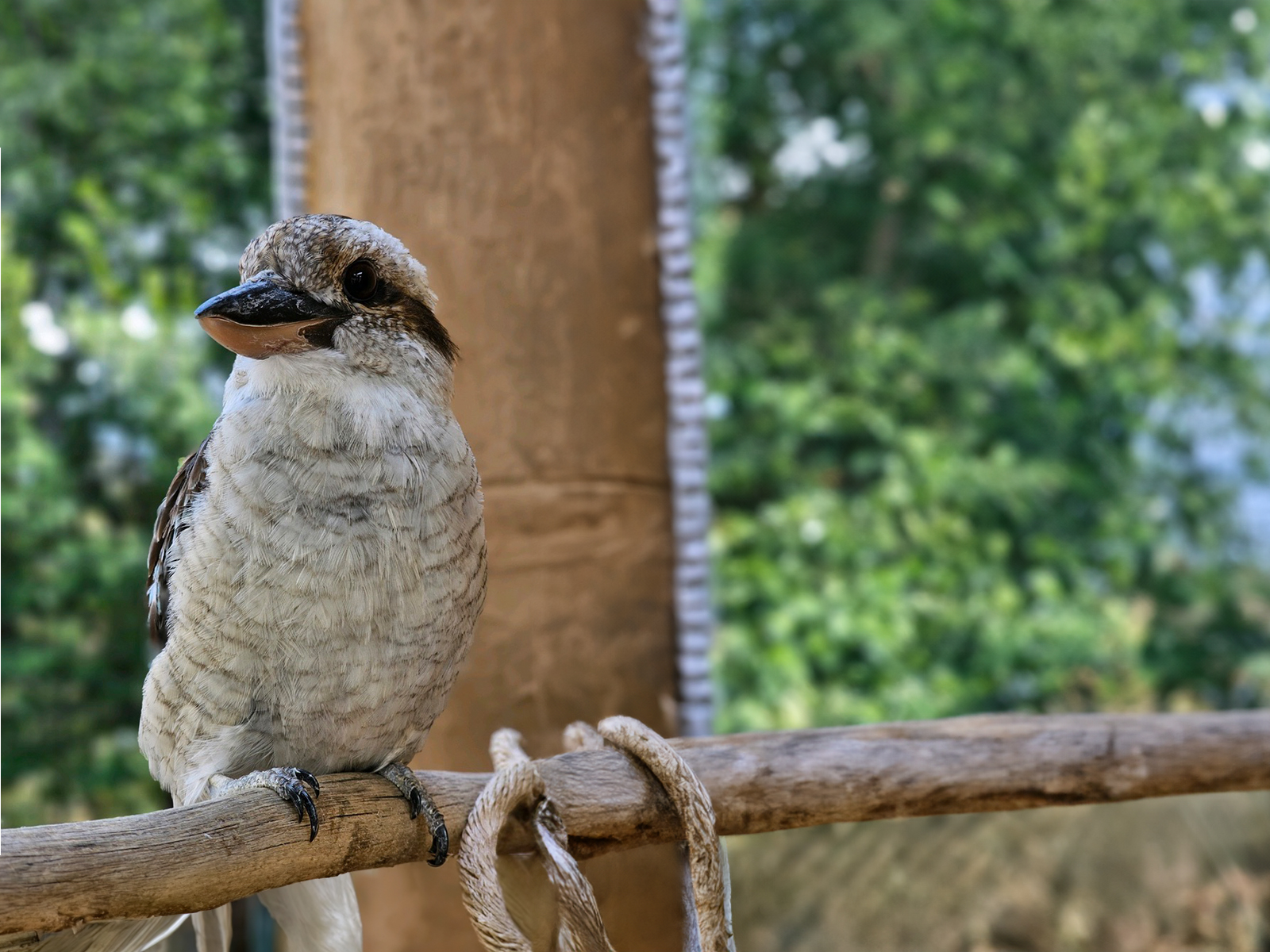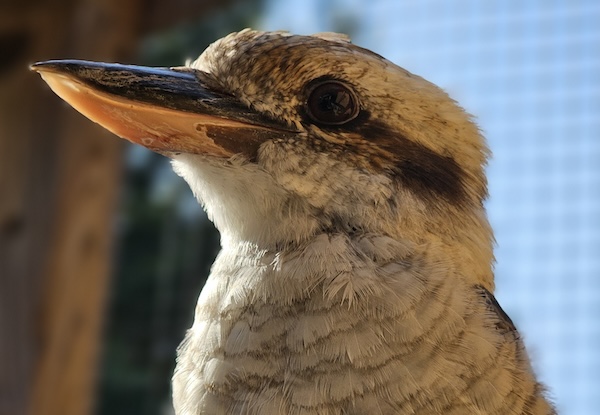Laughing Kookaburra
Laughing kookaburra chicks learn to “laugh” from their fathers.
Day of Creation: five
Biblical Kind: kingfisher (includes all kingfisher species)
Status: least concern
Height 16–19 inches (40.6–48.3 centimeters)
Weight: 7–16 ounces (198.4–453.6 grams)
Habitat: dry forests, wetlands, farmlands, and urban areas of eastern mainland Australia
Lifespan: 11–15 years
Diet: small invertebrates and vertebrates
Family Life: live in “riots” of monogamous pairs with 4–5 recent offspring
Reproduction: 2–3 chicks hatch after 24–26-day incubations
Fun Facts
The iconic call of laughing kookaburras is a learned behavior and is used to mark territory (usually at dawn and dusk), attract mates, establish hierarchy, or reinforce family bonds.
Kookaburra calls come from tracheobronchial syrinxes that have two sources of vibrations, so they can make two simultaneous frequencies with multiple harmonics.
Laughing kookaburra chicks stay with their parents for about four years, helping defend their territories and raise the newest chicks before moving on.
Laughing kookaburras are carnivores with a varied diet, including venomous snakes which they kill by slamming or dropping them from great heights. They wait in trees and watch for prey before pouncing. Strong neck muscles aid in bashing prey.
Although native to eastern mainland Australia, laughing kookaburras have been introduced to western Australia, Tasmania, New Zealand, and other surrounding islands because of their reputation for killing deadly snakes and to help reduce pests.


